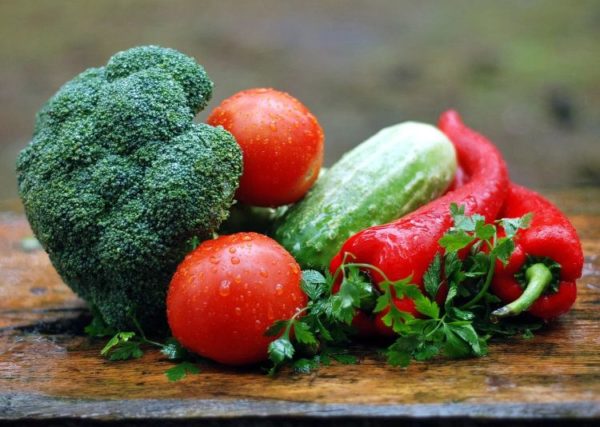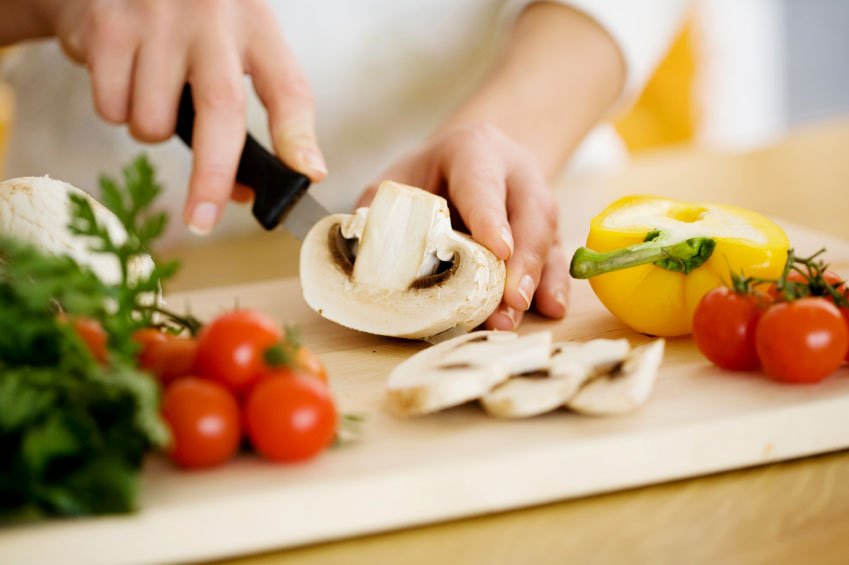There are just a bunch of foods to cut off your diet when dealing with a fatty liver, but this doesn’t mean that everything else is permitted or can’t cause further damage to your liver, especially if you don’t eat those with moderation in mind.
Basically, after talking to different doctors and spending countless hours researching this condition over the internet, I created a simple rule that has to be followed by those who want to reverse a fatty liver:
Cook your own food. Eat REAL food.
And this is the rule that I swear by even today, six years after being diagnosed with a fatty liver and 4.5 years after reversing it.
Right now, all foods seem to come in a bag, a can or a jar. If you want a salad dressing, it’s already made for you, waiting in a bottle.
If you want to bake your own bread, you have the pre-mix readily available. The steak is already cut and seasoned, waiting to be placed in the oven with no intervention on your side.
Most of the food that we eat now comes in a can, a jar or a bottle, or a bag. And it’s not real food on most occasions: there are added chemicals, preservatives and ingredients that shouldn’t be there, but which are hurting your liver, without you even knowing that you’re doing harm!
While there are definitely healthy options coming in cans, jars or bags, most of them aren’t. It’s usually easy to see if you check the list of ingredients: make it a habit to do so, actually, because this way you will find out that many of the things you buy are actually unhealthy.
Most peanut butters out there have unhealthy palm oil fat and sugar (with some having other nasties). That salad dressing is usually nothing but a mixture of chemicals.
A steak that’s ready to be placed in the oven has all sorts of preservatives and chemicals. Just check the list of ingredients to see if that’s the case or not.
Real food is very hard to come by nowadays. Even most of the food that we can eat in restaurants is not “real food” and it’s clearly not suited for a healthy fatty liver diet: saturated fats, fried foods, the use of ingredients that are full of preservatives and other additives – a ticking bomb for our livers.
Also, most of the food that we can get in grocery stores is not “real food” either and therefore you should avoid it as well.
Food in restaurants and much of the food you can get in a store is made to taste good. To look good. To spoil after a long period of time.
And all these are achieved by adding more sugar, more fat, more chemicals, resulting in a highly processed and less nutritious food which can also be proven really unhealthy. (References: Medical News Today, SFGate & all lists of ingredients on foods).
What is this “real food” I keep talking about, then?

Any type of fresh fruit or vegetable, legumes and seeds, as well as fresh meat and most dairy products are what I consider real food.
These should represent the foundation of your new eating habits and they are foods that haven’t been processed at all (or just a little).
But fortunately, you don’t have to stop here. Canned food can also be part of the “real food” that your body and especially fatty liver needs, as well as a huge array of frozen foods.
I wrote a recommended monthly shopping list for fatty liver here – check it out to see some healthy options that come in bags or cans.
Or just read below to see how to choose real food that is canned, frozen or available in a bottle/bag:
– check out the list of ingredients. If you need to take a couple more chemistry lessons to understand the list, that’s not real food.
You should stay away from preservatives, the E range of chemicals, flavor enhancers and added sugars (as well as all the replacement names for sugar, like fructose syrup and such: there are 56 names for sugar on ingredient lists).
– the fewer ingredients, the better. Have you ever checked out the list of ingredients on your daily bread?
I was shocked to see all those lines of ingredients, when bread should only have a maximum of four base ingredients: flour, water, yeast and sald.
Therefore, the golden rule of thumb is that the fewer ingredients are listed on the can, the better.
Of course, if there’s a natural sauce with tens of different herbs and spices, that can also be considered safe.
If you want beans, the ingredient list should have beans, water and maybe salt. Nothing else! And so on.

Use common sense to decide if the ingredients used are natural or chemicals whcih are unhealthy!
– go organic. If you can afford organic foods, then go for it! Be it fresh vegetables, meat or canned food, if it’s organic, then it’s better than the non-organic type.
Just use common sense and consider all the things recommended above as well. Simply because a product is organic, it doesn’t mean that it’s also safe for a fatty liver.
Most of the processed organic foods are also unhealthy and there are tons of organic foods that are high in sugars and fats, which are also not recommended in a fatty liver diet.
Organic food is not more nutritious according to studies, nor has it any added benefits except from the fact that this type of food is not filled with the pesticides, preservatives and other chemicals that non-organic foods usually have more of (which, for those suffering of NAFLD, is actually a big bonus!)
Best fatty liver approach: cook your own food

This will probably be the biggest challenge for you, even bigger than switching to eating real food. Because that food has to be cooked!
But cooking your own food using fresh ingredients or, better said, real ingredients whether they come from the farmer’s market, can or bag in your freezer, is the real challenge.
Cooking is time consuming, is a bit difficult and you will fail on numerous occasions, especially if you’re not an experienced cook.
But it’s the only approach if you want to be 100% sure that you have total control on your diet.
Ever since I have been diagnosed with a fatty liver, most of the food that I eat is food that I personally cook (or my wife does it, actually).
This way, you have control on a few key factors for a healthy fatty liver diet: oil intake, sugar intake and ingredients used. This is the control you need for being able to reverse your fatty liver.
This is not fancy, this is not fun and the food will not taste as good as the sweet, salty and fat food you’re used to eating, but it will be healthy and it will help you reverse your condition.
And the best part is that eventually, your taste buds will adapt. You will start enjoying this type of food and if you ever go back to eating that fake stuff filled with additives, you will understand how unnatural it actually tastes.
It might seem that you have very limited options out there because the number of ingredients you can use is relatively small and you should only boil, bake (with no added fat) or grill, but using your imagination and the ton of healthy recipes blogs over the internet will soon prove you wrong.

I already did my part here and shared a ton of ideas about what to eat and you can check them out below:
Alternately, you can check out my #1 recommended program for reversing Fatty Liver, which has recipes, advice and everything you need to get healthy again.
This is indeed a difficult task and something you might not be used with. Most important, it might seem that you don’t have the time to cook for yourself every day, or even every few days and indeed it’s pretty frustrating, especially at first.
But it’s something you will get used to, you HAVE to get used to because it’s your life that we’re talking about!
And your life and well being should be put on the top of the list of your priorities.
You might miss one of your favorite shows while you cook, you might have to stay up for 30 minutes more and therefore sleep a little less, but soon this will become a healthy habit and one you will get to love.
Even better, your liver will start loving it and you will be happy you made this choice.
Because this is the best fatty liver diet approach: cooking your own, real food! This is what has helped me reverse my fatty liver and it will help you too.
The best part of this approach? You’ll get used to it and start loving the real food you eat! So don’t try to find excuses not to do it and start cooking!

I was diagnosed with a fatty liver back in 2014 and managed to reverse it by mid-2015. Since then, I’ve been studying it, continuously updating my knowledge with the latest scientific findings and practical approaches to give others the help they need to reverse their condition.
My approach to managing fatty liver is holistic, balancing scientifically-backed information with real-life, practical advice based on personal, direct experience.
I am also the admin of the Fatty Liver Support Group on Facebook and the Fatty Liver Subreddit.


Best oil BEST. IS MACADEMIA OIL.
MARION